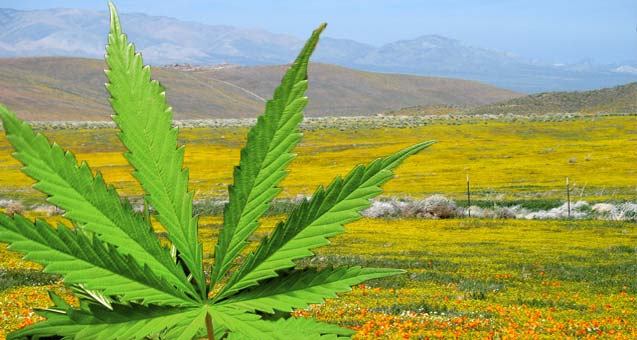
The discussion over marijuana in California is a heated one, and not just because of THC.
Since 1996, marijuana has been legal in California for medical purposes, setting off an increase in marijuana cultivation. But while that’s good for the pro-marijuana crowd, it’s not as good for the pro-environment crowd. Why? California’s marijuana industry is having a serious affect on wildlife and water, now aggravated by the state’s worst-ever drought.
Proposition 215 was passed in 1996, and since then officials have recorded more and more streams going dry, even causing one country to outlaw personal grows. But officials hold that it’s not really personal growing that’s the problem. According to the AP, “State fish and wildlife officials say much of the marijuana being grown in northern counties under the state’s medical pot law is not being used for legal, personal use, but for sale both in California and states where pot is still illegal.”
That demand is in turn increasing supply, in the form of larger-scale marijuana farming, which is having a serious environmental effect.
“People are coming in, denuding the hillsides, damming the creeks and mixing in fertilizers that are not allowed in the U.S. into our watersheds,” Denise Rushing, a Lake County supervisor told the AP. “When rains come, it flows downstream into the lake and our water supply.”
The affected watershed is often home to endangered salmon and steelhead, protected under federal law. According to an article in Outside magazine, looking at the threat of marijuana farms to fish, “The Department of Fish and Wildlife is spending $12 million annually on fish-habitat restoration in Northern California, and that money is disappearing as quickly as the state’s water. But if these creeks dry up for three or four years in a row, it will all be for nothing. There will be no generations of fish to return; the runs will be dead.”
So how much of the water issues can be attributed to marijuana? It’s hard to know exactly, simply because of the nature of the industry. But if officials are right, it’s easy to start pointing fingers.
“It’s impossible to know exactly how much water is being drawn from streams for marijuana farms because, by its very nature, the industry is unregulated. Estimates for how much a plant consumes in a day vary from three to six gallons, depending on size, how they’re grown, and whether you ask Fish and Wildlife or a grower. But with farms increasing at unprecedented rates in past years, many residents believe marijuana is the biggest factor threatening Humboldt’s watersheds,” Erik Neumann wrote in his Outside magazine article.
One biologist found a way to get a pretty precise estimate, though, by combining Google mapping technology and satellite data to find marijuana farms paired with government data on stream flows. Scott Bauer, a wildlife biologist, estimates that around 30,000 marijuana plants are being grown in each river system, and that each of those plants uses about six gallons of water per day during marijuana’s 150 day growing season. As Bauer told the AP, “We didn’t know they could consume all the water in a stream.”
Some marijuana farmers are working to clean things up, but the situation has been referred to as a “full-scale environmental disaster” by one Fish and Wildlife official.
The argument on the other side is that pot farmers are being unfairly blamed for environmental damage that can also be attributed to things like the timber industry and overfishing. As water in California becomes a hotter and hotter issue, you can be sure that the dispute over marijuana and its effects on the environment will continue.
Angry, shocked, overwhelmed? Take action: Support independent media.
We’ve borne witness to a chaotic first few months in Trump’s presidency.
Over the last months, each executive order has delivered shock and bewilderment — a core part of a strategy to make the right-wing turn feel inevitable and overwhelming. But, as organizer Sandra Avalos implored us to remember in Truthout last November, “Together, we are more powerful than Trump.”
Indeed, the Trump administration is pushing through executive orders, but — as we’ve reported at Truthout — many are in legal limbo and face court challenges from unions and civil rights groups. Efforts to quash anti-racist teaching and DEI programs are stalled by education faculty, staff, and students refusing to comply. And communities across the country are coming together to raise the alarm on ICE raids, inform neighbors of their civil rights, and protect each other in moving shows of solidarity.
It will be a long fight ahead. And as nonprofit movement media, Truthout plans to be there documenting and uplifting resistance.
As we undertake this life-sustaining work, we appeal for your support. Please, if you find value in what we do, join our community of sustainers by making a monthly or one-time gift.